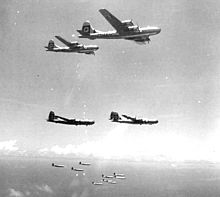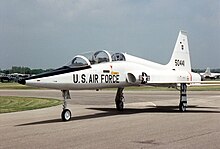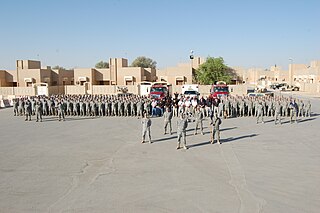
The 64th Air Expeditionary Group is a provisional United States Air Force group, most recently assigned to AFNORTH. In that capacity, in support of FEMA operations across the United States, the 64 Air Expeditionary Group (AEG) led Air Force doctors, nurses, medics and general purpose staff augmenting the civilian work force in hospitals along the west coast of California to reduce the patient load on civilian providers battling COVID-19. As the number of United States citizens with COVID-19 declined, the group transitioned to establishing Air Force-led COVID-19 Community Vaccination Center (CVC) sites.

The 447th Air Expeditionary Group is a provisional United States Air Force unit assigned to the Air Combat Command (ACC) and United States Air Forces Europe (USAFE). The unit is currently stationed at Incirlik Air Base, Turkey in support of Operation Inherent Resolve.

The 320th Air Expeditionary Wing is a provisional United States Air Force unit assigned to the Air Force District of Washington. It is stationed at Bolling AFB, District of Columbia. The 320 AEW may be activated or inactivated at any time.

The 484th Air Expeditionary Wing is a provisional United States Air Force unit assigned to Air Combat Command. It may be activated or inactivated at any time. It was activated and attached to United States Air Forces Central for the invasion of Iraq in 2003. It was headquartered at Prince Sultan Air Base, Saudi Arabia.

The 458th Air Expeditionary Group is a provisional United States Air Force unit assigned to United States Air Forces in Europe to activate or inactivate as needed. The most recent known activation of the unit was at Ramstein Air Base, Germany in 2011.

The 444th Air Expeditionary Wing is a provisional unit of the United States Air Force assigned to Air Combat Command to activate or inactivate as needed. It was last activated in 2003.

The 29th Flying Training Wing is an inactive United States Air Force unit last based at Craig Air Force Base, Alabama. It was inactivated when Craig was closed when the Air Force reduced its pilot training program after the Vietnam War.
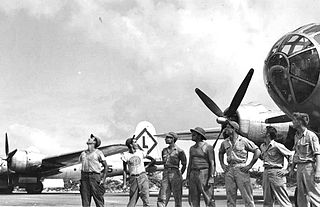
The 331st Bombardment Group is an inactive United States Air Force unit. It was last assigned to the 315th Bombardment Wing, being stationed at Northwest Field, Guam. It was inactivated on 15 April 1946.

The 409th Air Expeditionary Group is a provisional United States Air Force unit assigned to United States Air Forces Europe (USAFE), which may activate or inactivate the group as needed at any time.
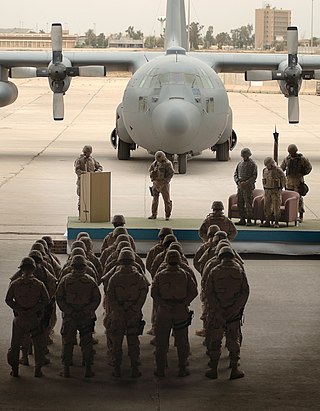
The 370th Air Expeditionary Wing (AEW) is a provisional United States Air Force unit assigned to United States Air Forces Central, which may activate or inactivate it at any time. The unit was last stationed in Iraq, and was likely inactivated in 2011 as part of the United States pullout of forces.
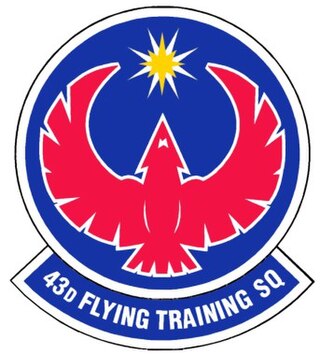
The 43d Flying Training Squadron is part of the 340th Flying Training Group and is the reserve associate to the 14th Flying Training Wing based at Columbus Air Force Base, Mississippi. It operates Raytheon T-1 Jayhawk, Beechcraft T-6 Texan II and Northrop T-38 Talon aircraft conducting flight training.

The 52d Troop Carrier Wing is a disbanded unit of the United States Air Force. It was last assigned to the New York Air National Guard as the 52d Fighter Wing, being stationed at Westchester County Airport, New York. It was inactivated on 31 October 1950 and the unit designation withdrawn and returned to the Air Force by the National Guard Bureau. It was disbanded on 15 June 1983.

The 84th Combat Sustainment Group is an inactive United States Air Force (USAF) group last assigned to the 84th Combat Sustainment Wing at Hill Air Force Base, Utah, where it was inactivated in 2010. The group was formed in 1942 as the 84th Bombardment Group, one of the first dive bomber units in the United States Army Air Corps and tested the Vultee Vengeance, proving that aircraft unsuitable as a dive bomber. As an Operational Training Unit, it was the parent for several other bombardment groups, but from 1943 until it was disbanded in 1944, trained replacement aircrews as a Replacement Training Unit designated the 84th Fighter-Bomber Group.

The 52d Operations Group is the flying component of the 52d Fighter Wing, assigned to the United States Air Forces in Europe - Air Forces Africa (USAFE-AFAFRICA). The group is stationed at Spangdahlem Air Base, Germany.

The 384th Air Expeditionary Group is a provisional United States Air Force unit assigned to the Air Combat Command. The 384 AEG may be activated or inactivated at any time.

The 319th Operations Group is a United States Air Force unit assigned to 319th Reconnaissance Wing, Air Combat Command. It is stationed at Grand Forks Air Force Base, North Dakota operating RQ-4 Global Hawk remotely piloted aircraft (RPA) in the intelligence, surveillance and reconnaissance (ISR) role.

The 98th Air Refueling Squadron is an inactive United States Air Force unit. Its last assignment was with the 92d Operations Group at Fairchild Air Force Base, Washington, where it was inactivated on 1 July 1998.

The 480th Fighter Squadron, nicknamed the "Warhawks", is an active United States Air Force unit operating the General Dynamics F-16CJ Fighting Falcon. The 480 FS assigned to the 52nd Fighter Wing, Spangdahlem Air Base, Germany is the only United States Air Forces in Europe – Air Forces Africa flying unit performing the Suppression of Enemy Air Defenses (SEAD) mission.

The 323d Expeditionary Operations Group is a provisional United States Air Force unit assigned to the United States Air Forces in Europe. As a provisional unit, it may be activated or inactivated at any time.

The 107th Attack Wing is a unit of the New York Air National Guard, stationed at Niagara Falls Air Reserve Station, New York. The 107th is equipped with the MQ-9 Reaper. If activated to federal service, the Wing is gained by the United States Air Force's Air Combat Command.




